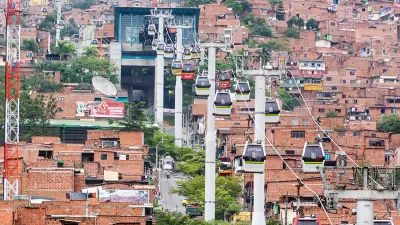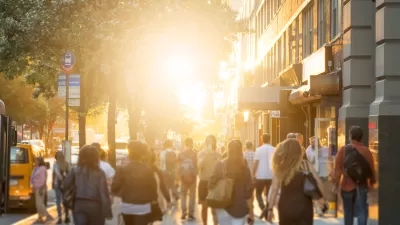For decades, researchers have hunted for an explanation for why big cities have been more prone to violent crime than small ones. A new hypothesis may offer a surprising answer, and prove that big cities aren't inherently much more dangerous.

Researchers have offered several potential explanations for historically higher rates of violent crime in big cities: from the idea that there's more valuable stuff to steal in big cities to the rise of the crack epidemic. Even if other potential reasons strike you, you probably haven't considered a new persuasive hypothesis: exposure to gasoline lead. In an article for Mother Jones and in a follow-up blog piece, Kevin Drum examines the connection between lead exposure and crime.
"In a nutshell, the lead-crime hypothesis is simple: exposure to gasoline lead in small children produces heightened aggressive tendencies. When an entire generation of children was exposed to lead in the 40s, 50s, and 60s, thanks to the boom in auto sales after World War II, it led to a huge rise in violent crime when the children grew up in the 60s, 70s, and 80s. The more lead they were exposed to, the more crime you got."
"So where did we see the most exposure to gasoline lead? Answer: in places with the densest concentration of automobiles. And that's in the inner core of big cities. In the early 60s, big cities had double the ambient air lead levels of mid-size cities, which in turn had air lead levels 40 percent higher than small cities. (Nevin, p. 316.) So if lead exposure produces a rise in crime, you'd expect to see a bigger rise in big cities than in small ones. Over time, big cities would become increasingly more dangerous than small ones."
"Likewise, when lead was removed from gasoline, and children started to grow up normally, you'd expect to see a bigger crime decrease in big cities. Over time, crime rates would start to converge."
"And that's exactly what we see in the data."
"Only gasoline lead," concludes Drum in his article, "with its dramatic rise and fall following World War II, can explain the equally dramatic rise and fall in violent crime."
FULL STORY: Are Big Cities More Dangerous Than Small Ones?

Alabama: Trump Terminates Settlements for Black Communities Harmed By Raw Sewage
Trump deemed the landmark civil rights agreement “illegal DEI and environmental justice policy.”

Study: Maui’s Plan to Convert Vacation Rentals to Long-Term Housing Could Cause Nearly $1 Billion Economic Loss
The plan would reduce visitor accommodation by 25% resulting in 1,900 jobs lost.

Planetizen Federal Action Tracker
A weekly monitor of how Trump’s orders and actions are impacting planners and planning in America.

Waymo Gets Permission to Map SF’s Market Street
If allowed to operate on the traffic-restricted street, Waymo’s autonomous taxis would have a leg up over ride-hailing competitors — and counter the city’s efforts to grow bike and pedestrian on the thoroughfare.

Parklet Symposium Highlights the Success of Shared Spaces
Parklets got a boost during the Covid-19 pandemic, when the concept was translated to outdoor dining programs that offered restaurants a lifeline during the shutdown.

Federal Homelessness Agency Places Entire Staff on Leave
The U.S. Interagency Council on Homelessness is the only federal agency dedicated to preventing and ending homelessness.
Urban Design for Planners 1: Software Tools
This six-course series explores essential urban design concepts using open source software and equips planners with the tools they need to participate fully in the urban design process.
Planning for Universal Design
Learn the tools for implementing Universal Design in planning regulations.
Caltrans
Smith Gee Studio
Institute for Housing and Urban Development Studies (IHS)
City of Grandview
Harvard GSD Executive Education
Toledo-Lucas County Plan Commissions
Salt Lake City
NYU Wagner Graduate School of Public Service




























